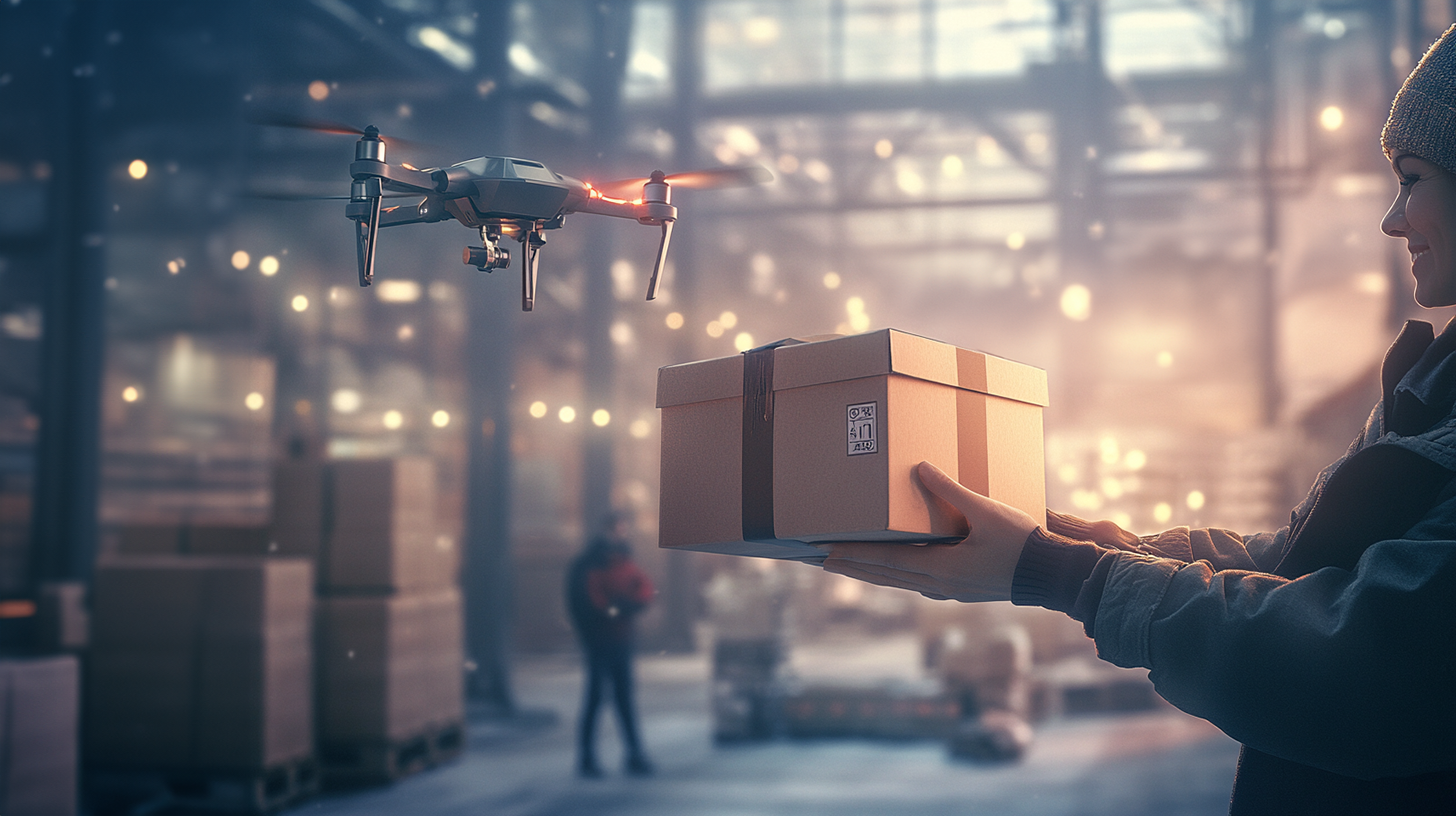Published on: November 27, 2024 / update from: November 27, 2024 - Author: Konrad Wolfenstein

From 2014 top topic to today: Same-Day Delivery (SDD) – How have delivery times developed compared to 2024? – Image: Xpert.Digital
Faster than ever: How same-day delivery has changed logistics
From 2014 to 2024: The development of Same-Day Delivery (SDD) – status quo and future prospects
Same-day delivery (SDD) was a much-discussed trend in the logistics industry in 2014, sparked by growing consumer expectations for faster delivery times. Within a decade, this service has developed from a niche offering to a central part of modern e-commerce logistics. Today, SDD is no longer just a competitive advantage, but a basic requirement for many retailers to meet the changing demands of consumers. But how exactly did SDD develop? What challenges remain and what does the future of this service look like?
The development of same-day delivery since 2014
In 2014, same-day delivery was still in its infancy. Technology giants such as Amazon, Google and Uber in particular drove development to challenge brick-and-mortar retail and maximize the convenience of online shopping. The aim was to enable customers to have their needs met almost immediately. But despite the ambitious visions, the spread of SDD was initially limited. High costs, logistical complexity and demand, which was still manageable at the time, stood in the way of widespread introduction.
Suitable for:
The years between 2014 and 2018 were characterized by rapid growth. The market's compound annual growth rate (CAGR) was an impressive 154% during this period. Companies invested heavily in urban warehouses, real-time tracking systems and route optimization algorithms. These technologies not only made SDD more efficient but also more economically viable. At the same time, more and more retailers began to integrate SDD into their business models to remain competitive in the highly competitive e-commerce market.

Delivery time – THE logistics topic in 2014 – The trend that is redefining delivery times – Image: Xpert.Digital
Status quo: Same-day delivery in 2024
In 2024, same-day delivery has become a standard offering, especially in urban areas. The most important developments can be summarized in five key areas:
1. Market growth and economic importance
The global market for same-day delivery continues to grow rapidly. In 2024, its value is estimated to be approximately $9.55 billion, with forecasts predicting growth to over $40 billion by 2032. This increase is primarily driven by increasing demand for instant gratification and technological innovations.
2. Technological advances
Technologies play a key role in the advancement of SDD. Autonomous vehicles and drones are increasingly being used for deliveries, while AI-powered systems for route optimization and warehouse management continue to increase efficiency. Micro-fulfillment centers – small warehouses located near metropolitan areas – also enable companies to deliver products to customers more quickly.
3. Consumer expectations
What was once considered a luxury is now a given for many consumers: over half of all online retailers now offer SDD options. Customers not only expect fast deliveries, but also flexibility when selecting time slots or delivery locations.
4. Sustainability
Sustainability has become a central issue. Companies are increasingly turning to electric delivery vehicles, bicycle deliveries and sustainable packaging to reduce the environmental footprint of their supply chains. Despite the focus on speed, many providers try not to lose sight of environmental sustainability.
5. Competitive landscape
Market leaders such as Amazon Prime Now, Walmart and Instacart dominate the market with sophisticated logistics networks. At the same time, smaller retailers are pushing into the business through partnerships with third-party providers such as DoorDash or Postmates.
Challenges for Same-Day Delivery
Despite its successes, SDD continues to face significant challenges:
- High operating costs: Cost structure remains a hurdle for many companies, especially for smaller retailers without access to extensive logistics resources.
- Last mile: The so-called “last mile” – delivery to the customer’s door – is still the most expensive and complex part of the delivery process.
- Sustainability vs. Speed: The balancing act between fast delivery times and environmentally friendly practices remains difficult. While consumers demand both, this requires significant investment in green technologies.
- Infrastructure problems: In rural areas or regions with poor transport infrastructure, it is often difficult to implement SDD efficiently.
Future prospects: what happens next?
The future of same-day delivery will be significantly shaped by technological innovations and a greater focus on sustainability:
1. Advances in technology
The use of drones and autonomous vehicles is expected to continue to increase and help reduce the cost of SDD. At the same time, AI systems are becoming increasingly more powerful and enable even more precise planning of delivery routes and better prediction of demand peaks.
2. Personalized delivery options
The future also lies in personalization: For example, customers could choose whether they would like to receive their delivery within a few hours or at a specific time - depending on their individual needs.
3. Opening up new markets
While SDD is currently prevalent in urban areas, this may soon change. Improved infrastructure projects could mean that rural regions or emerging countries also have access to this service.
4. Sustainable innovations
Companies will continue to need to invest in green logistics solutions - be it by expanding electric vehicle fleets or using reusable packaging.
A success story with potential
Since 2014, same-day delivery has evolved from a vision to an indispensable part of modern retail. In 2024, SDD is no longer just an additional service; it has become a must for companies that want to be successful in e-commerce. However, there is still plenty of room for improvement – particularly in terms of cost efficiency and sustainability.
The next few years will be crucial: companies must use innovative technologies and at the same time assume ecological responsibility in order to meet increasing demands. If successful, same-day delivery could not only revolutionize the way we shop, but also make an important contribution to shaping more sustainable logistics.
Suitable for:

